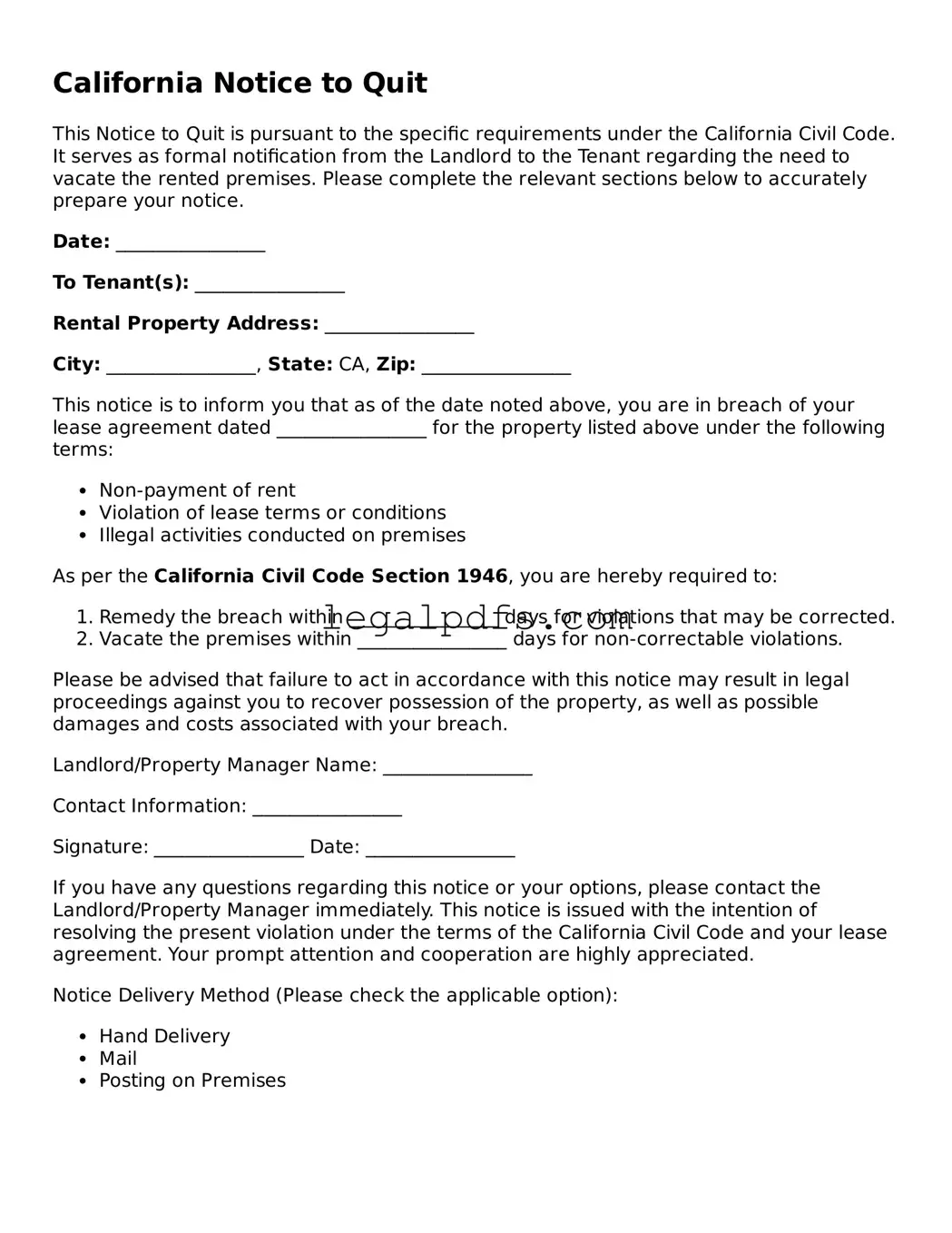What is a California Notice to Quit form?
A California Notice to Quit form serves to inform a tenant that they must either correct a violation of their lease agreement or vacate the premises by a specified date. This notice can address issues such as non-payment of rent, unauthorized occupants, or other breaches of the lease terms.
When is a Notice to Quit required in California?
Landlords in California must provide a Notice to Quit as a first step in the eviction process when a tenant has violated the lease agreement. Depending on the violation, the notice period can be 3, 30, 60, or 90 days, allowing the tenant time to rectify the situation or leave the property.
How is a California Notice to Quit delivered to a tenant?
This notice must be delivered either in person to the tenant, left with someone of a suitable age at the residence, or mailed to the tenant. It’s crucial to follow proper delivery methods to ensure compliance with California law and the enforceability of the notice.
What should be included in a California Notice to Quit?
The form should clearly state the reason for the notice, such as unpaid rent or lease violation, the required action by the tenant (e.g., pay the overdue rent, remove an unauthorized pet), and the deadline for compliance or vacating the premises. Furthermore, it must include the date, tenant's name, and address of the rental property.
What happens if a tenant does not comply with a Notice to Quit in California?
If a tenant fails to resolve the issue within the given timeframe, the landlord may begin the eviction process. This involves filing a lawsuit, and the case will be decided in court. It’s vital for landlords to follow proper legal procedures to avoid delays and potential claims of wrongful eviction.
Can a tenant dispute a California Notice to Quit?
Yes, a tenant can challenge the notice by proving compliance with the lease agreement, demonstrating that the notice was improperly served, or showing that the landlord is acting in retaliation. Tenants may seek legal advice to ensure their rights are protected.
Does a California Notice to Quit need to be notarized?
While not generally required, notarization can help authenticate the document if the eviction case goes to court. It provides an extra layer of verification that the notice was indeed prepared by the landlord.
How long does a tenant have to respond to a Notice to Quit in California?
The response time varies based on the reason for the notice. Typically, it’s 3 days for nonpayment of rent or other lease violations, 30 to 60 days for no-fault evictions depending on how long the tenant has lived in the unit, and 90 days for subsidized housing tenancies.
Is there a difference between a Notice to Quit and an Eviction Notice in California?
Though often used interchangeably, a Notice to Quit is a prerequisite to an eviction notice. It gives tenants a chance to remedy the lease violation or vacate, while an eviction notice is a formal legal document that initiates the court process to remove a tenant from the property.
Can a landlord issue a Notice to Quit for reasons other than lease violations in California?
Yes, landlords can issue a notice for no-fault reasons, such as intending to personally occupy the unit, remove the property from the rental market, or make substantial renovations that require the unit to be vacant. These situations often require longer notice periods and specific legal requirements must be met.
